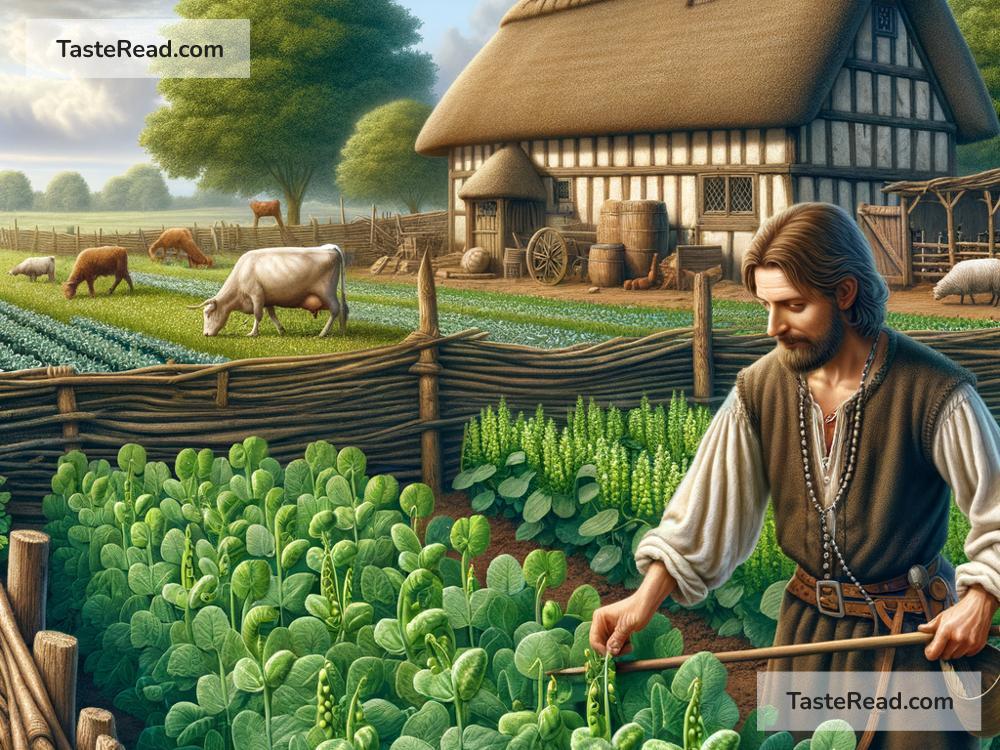The Curious Role of Peas in Medieval Farming
When people think of medieval Europe, they often imagine knights, castles, and grand feasts. But behind all the pageantry was a world of hardworking farmers who made sure everyone had food to eat. Farming was the backbone of medieval life, and one humble plant played a surprisingly important role: the pea. Yes, the tiny, green legume you might find in your soup today was once a key ingredient in keeping medieval communities fed and healthy. Let’s dive into the curious role of peas in medieval farming and understand why they mattered so much.
The Basics of Medieval Farming
Before we talk about peas, it’s important to understand how farming worked in the Middle Ages. Medieval farmers didn’t have modern machinery or scientific knowledge. Instead, they relied on simple tools, animal power, and centuries-old traditions. The most common agricultural system was known as “crop rotation.”
In crop rotation, farmers divided their fields into sections. Each year, they planted different crops or left parts of the field empty, allowing the soil to rest. This system helped prevent the soil from wearing out, keeping it fertile for future planting. Farmers grew staple crops like wheat, barley, and rye, which were made into bread—a key food in medieval diets. However, these grains had a downside: they drained nutrients from the soil over time. That’s where peas came to the rescue.
Peas and Fertility
Peas belong to a family of plants called legumes, which have a special superpower: they improve soil fertility. Legumes have a unique relationship with tiny bacteria in their roots. These bacteria take nitrogen—a critical nutrient for plants—from the air and turn it into a form that plants can use. Essentially, planting peas helped “recharge” the soil, making it ready to grow other crops.
Medieval farmers quickly realized the benefits of planting peas. By including peas in their crop rotation systems, farmers could keep their fields healthier and more productive. As a result, they were able to grow more food and sustain larger communities.
A Reliable Food Source
Peas weren’t just valuable for the soil—they were also an important food source for medieval people. Life in the Middle Ages was tough, especially for peasants who worked the land. Many families survived on simple diets made up of bread, porridge, and vegetables. Meat was expensive and often reserved for the wealthy, so peas became a crucial source of protein for people who couldn’t afford meat.
Dried peas were especially popular because they could be stored for long periods without spoiling. In winter, when fresh food was scarce, peas provided a steady supply of nutrition. They were versatile, too: cooks could boil them into soups, mash them into pastes, or mix them with other ingredients to make filling meals. For medieval families, peas weren’t just a crop; they were a lifeline.
Peas and Social Change
Interestingly, peas also played a role in shaping social and economic changes during the Middle Ages. As towns and cities grew, markets for peas and other crops expanded. Farmers who could produce more peas had the chance to sell them for profit. This created opportunities for some peasants to improve their financial situations. While most peasants remained poor, the extra income from peas may have helped a few escape poverty or strengthen their community’s economy.
Additionally, peas were one of the crops that contributed to better health during the Middle Ages. Malnutrition was common, but the protein and nutrients from peas helped keep people stronger and less vulnerable to disease. Over time, as farming practices improved and more food became available, populations began to grow. It’s hard to imagine tiny peas playing such a big part in history, but they did.
A Symbol of Humble Innovation
The story of peas in medieval farming is a reminder of how small things can have big impacts. Medieval farmers might not have had access to scientific studies, but they understood the importance of balancing their soil’s needs with the needs of their communities. By using peas in their crop rotations, they created a sustainable system that fed their families while keeping the environment healthy.
Today, legumes like peas are still celebrated for their soil-enriching qualities and nutritional benefits. But in the Middle Ages, peas were truly superstars of farming. They quietly supported a system that fed people, helped the land thrive, and contributed to social changes across Europe.
Conclusion
Next time you see a pea on your plate, take a moment to appreciate its rich history. These little green seeds were once a cornerstone of medieval farming and survival. They helped farmers keep their fields fertile, provided nutritious meals to struggling families, and even shaped the future of agriculture.
The role of peas in medieval farming is a fascinating example of how humans have always relied on nature’s ingenuity to solve problems. In a world without modern technology, this tiny legume made a huge difference. It may seem humble, but the pea truly earned its place in the history of farming and society.


